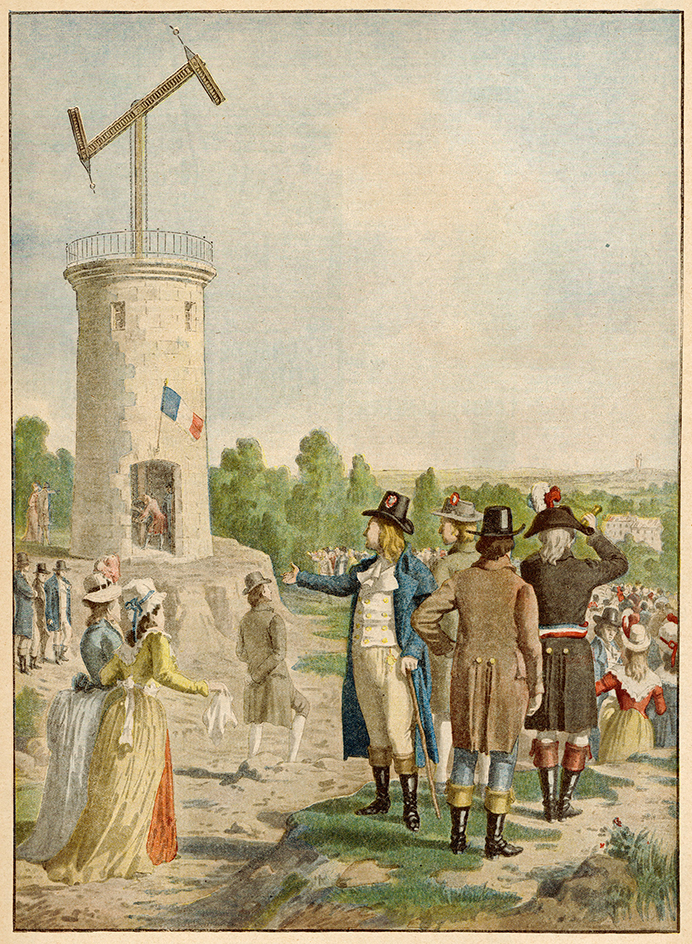Chappe, Claude, << shap, klohd >> (1763-1805), invented a method of long-distance communication called the semaphore optical telegraph. It helped change the way people sent messages before the electric telegraph or telephone.

Chappe was born on Dec. 25, 1763, in Brûlon, France, near Le Mans. He became a Roman Catholic priest but lost his religious post in 1789 during the French Revolution (1789-1799). In 1793, Chappe won government support to develop his ideas for rapid communication.
Chappe used steeples and towers on hills to hold regulators. The regulators were wooden crossbeams 14 feet (4.25 meters) long. They had wings 6 feet (1.8 meters) long called indicators on each end. Operators could arrange the regulators and indicators at hundreds of angles. Each combination represented a letter, number, or coded word. People on similar towers 5 to 20 miles (8 to 32 kilometers) away used telescopes to spot the messages. Then they copied the message on their own tower, passing it on. Chappe coined the term télégraphe for his invention, from Greek words meaning distant writer.
By 1794, Chappe built 15 tower stations. They formed a network covering 130 miles (210 kilometers) between Paris and Lille, a city close to heavy fighting between France and Austria during the French Revolution. Napoleon Bonaparte, a French general, relied on the system to coordinate war efforts and government.
Though simple, Chappe’s system had many disadvantages. People could not spot messages in fog or storms. Operators also sometimes made mistakes in copying messages. Rivals challenged Chappe and claimed to have invented the telegraph themselves. Depressed and ill, Chappe committed suicide on Jan. 23, 1805.
Chappe’s telegraph network continued to expand throughout France. Other European countries and several U.S. cities built similar optical telegraphs. But Chappe’s invention became obsolete with the invention of the electric telegraph in 1840.
